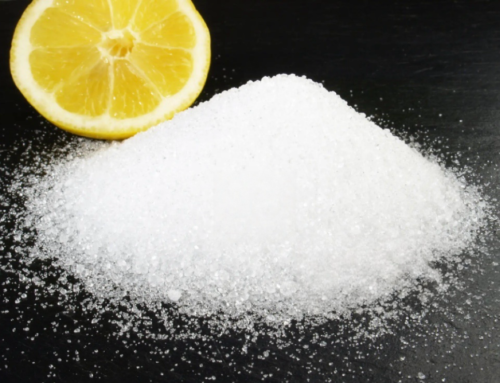Calcium Magnesium Acetate (CMA) is a chemical compound widely used as a deicer and anti-icer. It offers an effective and environmentally friendly alternative to chloride-based deicers, such as rock salt or calcium chloride. Calcium Magnesium Acetate (CMA) is also used as a food additive for its acidity-regulating and antimicrobial properties.
The formula for Calcium Magnesium Acetate is CaMg2(CH3COO)6. It consists of one calcium ion (Ca2+), two magnesium ions (Mg2+), and six acetate ions (CH3COO-).
Calcium Magnesium Acetate Properties
| Name | Calcium Magnesium Acetate |
|---|---|
| Formula | CaMg2(CH3COO)6 |
| Molar Mass | Approximately 398.67 g/mol |
| Appearance | White crystalline powder |
| Melting Point | Approximately 150°C (302°F) |
| Density | Approximately 1.59 g/cm3 |
| Solubility | Soluble in water |
| HS Code | 29151500 |
| CAS No. | 76123-46-1 |
What is the use of calcium magnesium acetate?
In Food Industry
pH Regulation: Calcium Magnesium Acetate acts as a pH regulator, helping to maintain the desired acidity or alkalinity in food products. It can be used to adjust and stabilize the pH levels, which is crucial for maintaining the proper texture, flavor, and overall quality of the food.
Stabilizer: Calcium Magnesium Acetate functions as a stabilizer in food formulations, helping to maintain the consistency, texture, and uniformity of the product. It prevents ingredient separation, emulsion breakdown, or crystallization, contributing to the overall stability of the food.
Preservative: Calcium Magnesium Acetate exhibits antimicrobial properties, which can inhibit the growth of certain microorganisms in food. It acts as a preservative, extending the shelf life of food products by reducing the risk of spoilage and microbial contamination.
Acidity Regulator: Calcium Magnesium Acetate can be used as an acidity regulator in food and beverage applications. It helps to adjust the acidity levels, enhancing the taste, flavor, and overall sensory characteristics of the final product.
Texture Modifier: Calcium Magnesium Acetate can influence the texture of food products by interacting with other ingredients. It can improve the mouthfeel, thickness, or viscosity of foods, enhancing their overall sensory experience.
You Can Find it in these foods
 Yogurt and Dairy Products: Calcium magnesium acetate is used as a pH regulator in yogurt and other dairy products to maintain stability and desired texture.
Yogurt and Dairy Products: Calcium magnesium acetate is used as a pH regulator in yogurt and other dairy products to maintain stability and desired texture.
Sauces and Salad Dressings: Calcium magnesium acetate serves as a stabilizer and pH regulator in sauces and salad dressings, ensuring texture and consistency.
Seasonings and Food Additive Mixtures: Calcium magnesium acetate can be included in seasonings and food additive mixtures to provide desired acidity and stability.
Bread and Pastries: Calcium magnesium acetate is sometimes used as a pH regulator in bread and pastry recipes to enhance dough fermentation and improve texture.
Beverages and Juices: Calcium magnesium acetate is employed as an acidity regulator in beverages and juices to adjust taste and flavor profiles.
Seasoned Meat Products: Calcium magnesium acetate can be used for marinating and seasoning meat products, enhancing flavor and stability.
Egg Products: Calcium magnesium acetate is occasionally used as a pH regulator in egg-based products, such as cakes and pastries, to improve texture.
Frozen Foods: Calcium magnesium acetate functions as a stabilizer and preservative in frozen food products, helping to maintain quality and texture.
Soups and Seasoning Mixes: Calcium magnesium acetate is incorporated into soups and seasoning mixes to adjust acidity and enhance the taste.
Grains and Grain Products: Calcium magnesium acetate is sometimes used as an acidity regulator and stabilizer in grains and grain-based products to achieve desired texture and consistency.
In Industrial Filed
Deicing and Anti-icing Agent: Calcium Magnesium Acetate is commonly used as an environmentally friendly alternative to chloride-based deicers for snow and ice control on roads, sidewalks, and other surfaces. It helps melt ice and snow by lowering their freezing point, preventing their accumulation, and improving traction.
Dust Control: Calcium Magnesium Acetate can be applied to unpaved roads, construction sites, and mining operations to control dust emissions. It helps bind the particles together, reducing airborne dust and improving air quality in the surrounding areas.
Concrete Additive: Calcium Magnesium Acetate is sometimes used as an additive in concrete formulations. It can improve the workability and strength of concrete, as well as reduce the risk of corrosion in reinforced concrete structures.
Soil Stabilization: Calcium Magnesium Acetate can be applied to stabilize soil in construction projects, mining sites, and erosion-prone areas. It helps bind soil particles together, improving their strength and preventing erosion.
What are the pros and cons of calcium magnesium acetate?
Pros:
Environmentally Friendly: CMA is considered an environmentally friendly alternative to traditional deicing agents. It is biodegradable and does not harm plants, animals, or aquatic life when used as a deicer on roads or sidewalks.
Non-Corrosive: Unlike many other deicing agents, CMA is non-corrosive to concrete, metal, and other infrastructure. This reduces the damage caused to roads, bridges, and buildings, resulting in lower maintenance costs.
Natural Source: CMA is derived from natural sources, such as limestone and acetic acid. It is considered a natural and safe food additive, which can be preferred by consumers who seek natural ingredients in their food.
Versatility: CMA is a versatile food additive that can be used in a wide range of food products, including baked goods, beverages, dairy products, sauces, dressings, and more. Its compatibility with various food formulations makes it suitable for different applications in the food industry.
Reduced Sodium Content: CMA can be used as a partial or complete replacement for sodium-based additives in certain food formulations. This can help reduce the overall sodium content of the product, which is beneficial for individuals on low-sodium diets or concerned about their sodium intake.
Compatibility with Other Ingredients: CMA is compatible with a wide range of other food ingredients, making it easier to incorporate into various recipes and formulations. It blends well with other additives, flavors, and functional ingredients, allowing for versatile and flexible food product development.
Cons:
Cost: CMA may have a higher cost compared to some other food additives. This can impact the overall cost and feasibility, especially for large-scale food manufacturers.
Flavor Impact: In some cases, high concentrations of CMA or improper use may impact the taste and flavor profile of food products. Careful formulation and testing are necessary to maintain desired sensory characteristics.
Is calcium magnesium acetate safe?
Yes, Calcium Magnesium Acetate (CMA) is generally considered safe for use as a food additive. It has undergone safety evaluations by regulatory authorities, such as the U.S. Food and Drug Administration (FDA) and the European Food Safety Authority (EFSA), and is approved for use in food products.
CMA is derived from natural sources, such as limestone and acetic acid, and is considered a safe alternative to synthetic additives. It has a long history of use in food applications and has been found to pose no significant health risks when used within the approved limits.
However, as with any food additive, it’s important to use CMA in accordance with regulatory guidelines and recommended usage levels. Adhering to proper handling, storage, and manufacturing practices is crucial to ensure the safety of food products.




